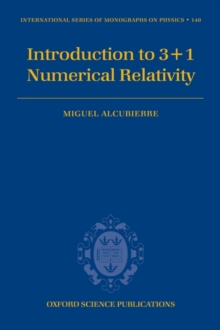
The Global Approach to Quantum Field Theory Multiple-component retail product
by Bryce (University of Texas at Austin) DeWitt
Part of the International Series of Monographs on Physics series
Multiple-component retail product
Description
The book shows how classical field theory, quantum mechanics, and quantum field theory are related.
Thedescription is global from the outset. Quantization is explained using the Peierls bracket rather than the Poisson bracket.
This allows one to deal immediately with observables, bypassing the canonical formalism of constrained Hamiltonian systems and bigger-than-physical Hilbert (or Fock) spaces.
The Peierls bracket leads directly to the Schwinger variational principle and the Feynman functional integral, the latter of which is taken as defining the quantum theory. Also included are the theory of tree amplitudes and conservation laws, which are presented classically and later extended to the quantum level.
The quantum theory is developed from the many-worlds viewpoint, and ordinary path integrals and the topological issues to which they give rise are studied in some detail.
The theory of mode functions and Bogoliubov coefficients for linear fields is fully developed, and then the quantum theory of nonlinear fields is confronted.
The effective action, correlation functions and counter terms all make their appearance at this point, and the S-matrix is constructed via the introduction of asymptotic fields and the LSZ theorem.
Gauge theories and ghosts are studied in great detail. Many applications of the formalism are given: vacuum currents, anomalies, black holes, fourth-order systems, higher spin fields, the (lambda phi) to the fourth power model (and spontaneous symmetry breaking), quantum electrodynamics, the Yang-Mills field and its topology, the gravitational field, etc.
Special chapters are devoted toEuclideanization and renormalization, space and time inversion, and the closed-time-path or ``in-in'' formalism.
Emphasis is given throughout to the role of the functional-integral measure in the theory.
Six helpful appendices, ranging from superanalysis to analytic continuation in dimension, are included at the end.
Information
-
Only a few left - usually despatched within 24 hours
- Format:Multiple-component retail product
- Pages:1136 pages
- Publisher:Oxford University Press
- Publication Date:06/03/2003
- Category:
- ISBN:9780198510932
Information
-
Only a few left - usually despatched within 24 hours
- Format:Multiple-component retail product
- Pages:1136 pages
- Publisher:Oxford University Press
- Publication Date:06/03/2003
- Category:
- ISBN:9780198510932










